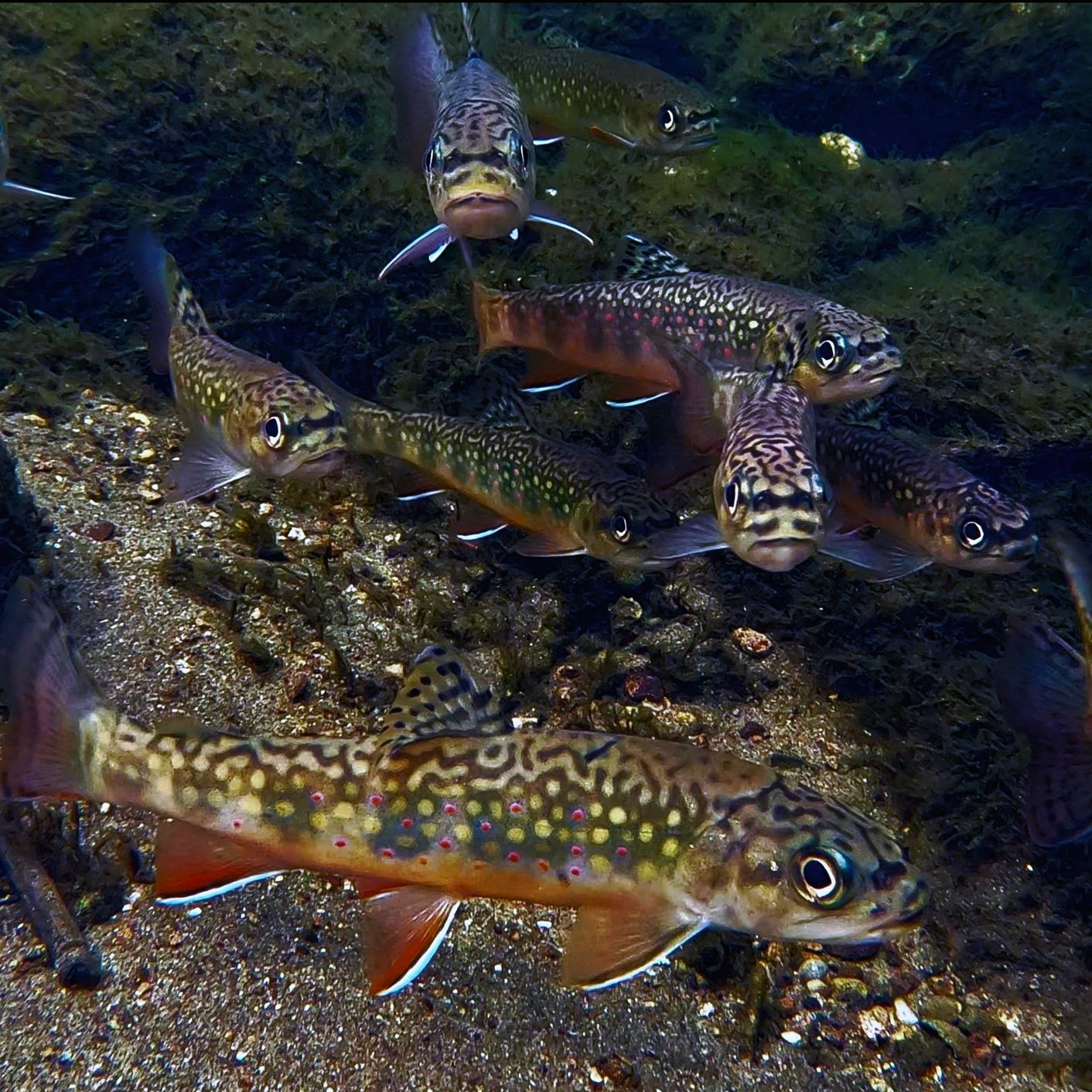
Module 1
About Brook Trout
Why “Bring Back the Brookies”? Brook Trout are very sensitive to their environment, needing cold, clear, unpolluted water to survive. If they can live in a stream, we know that it’s a healthy ecosystem. Brook Trout numbers have been declining in Niagara’s only coldwater stream, Twelve Mile Creek. Learn why and discover what conditions they need to go from surviving to thriving.
Watch
Learn
How To Identify Brook Trout
The Brook Trout’s general body colour is dark-green. Looking from above, its topside has squiggly markings, called vermiculations, from head to tail. The sides have pale yellowish spots and distinctive red spots, surrounded by bright-blue halos. The pectoral, pelvic, and anal fins on the underside are pale to bright-orange with a white leading edge and a black stripe.
Spawning males are more intensely coloured as the belly turns deep orange and they develop a hook, or kype, on the front tip of their lower jaw.
At maturity, wild Brook Trout may be from 12cm (5 inches) to 45cm ( 18 inches) long, depending on the coldwater conditions and food availability.
A Brook Trout’s tail fin is more square shaped than that of most other trout and salmon.
Brook Trout Basics
Brook Trout (Salvelinus fontinalis) are the only native salmonid (trout/salmon) species in Ontario and live in streams with cold and clean water.
The genus name “Salvelinus”comes from an old name for char. The species name “fontinalis” means “of springs.”
Brook Trout can grow to over 4kg in areas where conditions are ideal, but in southern Ontario, a 30cm, or 1 foot “Brookie” is a large fish.
Technically a char, Brook Trout are in the “Salmonidae” family and are related to the Arctic char of the Far North, the Dolly Varden and Bull Trouts of the West, and to Lake Trout.
Brook Trout Life Cycle and Habitat Needs
Cooling water temperatures cue Brook Trout to start spawning, in the fall between mid-September and November. Cold water needed for egg development contains higher levels of dissolved oxygen than warmer water.
Brook Trout may travel to upstream headwaters to find the right gravelly spawning bed; a rocky riffle section of the stream with turbulent, oxygen rich water flow.
With a vigorous sideways tail motion, the female digs a shallow nest depression, called a "redd", while males chase other males away. After a female lays eggs and a male fertilizes them, they are lightly covered with gravel and left to hatch in early spring.
Newly hatched alevins stay hidden in the redd while they feed from a yolk sac attached to their belly.
Young fry leave the redd to feed on plankton and aquatic insects, but can still shelter in slow spots behind rocks within the fast flowing water.
As larger fingerlings, Brook Trout develop markings that help them camouflage, while overhanging vegetation and undercut banks also provide hiding places to hide from predators.
Taking two years to reach maturity, juvenile Brook Trout thrive in water temperatures below 20°C. They seek refuge in deep pools where the water is cooler, as they cannot survive in water temperatures over 22°C for a sustained period of time.
Brook Trout need water with low turbidity, without particles of dirt, or pollutants, suspended in it. A stream that looks like chocolate milk creates a very poor habitat for Brookies.
Quick Quiz
The Question
a
b
c
Explore
Learning is all around us.
Check out these fun activities to help you discover more about Brookies and Twelve Mile Creek





